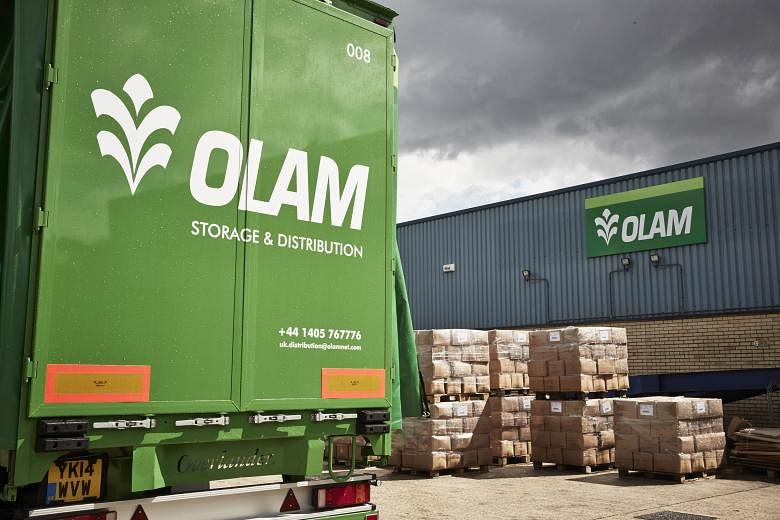Putting money into the local equities market has turned out to be a losing proposition of late. The benchmark Straits Times Index is down 15 per cent so far this year - marking its worst performance since the global financial crisis meltdown seven years ago.
Investing in property - another traditional favourite - is fraught with risk too, given the potential glut of private residential apartments coming into the market in the next two years. That leaves corporate bonds as one of the few alternatives left for investors wanting a higher return than that of bank fixed deposits or the Singapore Savings Bonds offered by the Government.
Bonds are a form of borrowing issued by governments or companies that want to raise funds from the financial market. Bonds pay investors a steady stream of income - known as coupons - at periodic intervals until they are repaid by the borrower. This makes them increasingly popular, not just because low economic growth has reined in stock prices but also because they meet investors' preference for products offering a fixed income as they get older.
So it is not surprising that even medium-sized firms have been wildly successful at raising funds by selling bonds to the investing public, even when they do not get a ratings agency to grade the bonds they have issued.

Aspial Corporation started the ball rolling in August with a 5.25 per cent, five-year bond offering which it upsized to $146.7 million from the original $75 million target due to good response from retail investors.
Last month, Oxley Holdings raised its total issue size to $300 million - $225 million for the public tranche and $75 million under the placement tranche - up from an initial offer of $125 million for a four-year bond issue which will pay a fixed rate of 5 per cent a year.
What does this suggest?
At first glance, it appears that the high demand for corporate bonds like those issued by Aspial and Oxley was driven by the same quest for yield by investors in a world of virtually zero interest rates.
Then there is the attraction of the relatively short tenure of the bonds. As long as investors are content to get the coupon payments until the company redeems the bonds at maturity, they do not have to worry about daily price movements.
However, that holds true only if a company does not go belly up, files for bankruptcy protection or misses a coupon payout.
Bondholders can take solace in the fact that the default rate for bond issuers worldwide is very low - about 2.5 per cent, according to The Financial Times - so they are fairly safe investment instruments.
But the bad news is that the default rate is rising worldwide as oil and commodities prices slump. If the United States hikes interest rates, bond prices may also take a knock as investors demand a higher return for the risks they take.
In theory, bond issuers with higher credit quality will offer a lower coupon for their bonds than those of lower credit quality. This is usually reflected in the credit ratings given to the bond by reputable rating agencies like Fitch, Moody's or Standard & Poor's.
But the problem is that many bond issuers here do not get their bonds rated. Hence, an investor will be well advised to do his homework before jumping in.
This should include finding out more about the bond issuer, the business sector it operates in, the risks that may have an adverse impact on its operations and how easily the company is able to meet interest repayment on its debt.
But if retail investors are patient, there may soon be a lot more bond options for them.
Most retail investors have been confined to a handful of offerings traded on the Singapore Exchange because the vast majority of bonds are sold to institutional and well-heeled investors on the "wholesale" or "over-the-counter" market, where the minimum investment is $200,000 a pop.
But the Monetary Authority of Singapore (MAS) is finalising a framework to allow top credit-
grade issuers like the Housing Board to do away with the need to issue a legal document known as a prospectus - which requires time and effort to prepare - in order to offer bonds to retail investors.
Corporate issuers that are rated as "investment grade" could break up their bonds - which have been made available to institutions and wealthy investors - into denominations as low as $1,000 once they have been listed on the SGX for six months.
The sweetener for these issuers is the option to issue more bonds - up to 50 per cent of the original bond size - to retail investors via ATMs and brokers without having to issue a prospectus. To ensure that retail investors' interests are protected, such issuers must not have recorded a net loss for the three years before issuing the bonds. They should also have recorded a positive net operating cashflow over that period.
This is an important development as it will finally put bonds into the hands of retail investors without overstretching their finances. As in all other investments, an investor will have to diversify his bond purchases in order to minimise the risk of a loss.
But there have been instances in recent years of retail investors sinking much of their nest egg into a single bond offering on the wholesale market - even though this can cost $200,000 or more - in order to partake of the mouth-watering yields on offer.
This can cause grief if the firm suffers a calamity - like getting attacked by a short-seller such as Muddy Waters, as in the case of Olam International three years ago - which can cause both its share price and bond prices to tumble.
At least in the Olam case, there was a happy ending as the bond prices recovered after Temasek Holdings mounted a takeover of the agricultural commodities supplier.
But we cannot expect a happy ending all the time. That is why a new framework for issuing bonds and trading them is needed for retail investors, to allow them to diversify any investment risks they may encounter.
As the Singapore population ages, the appetite for bonds is likely to grow. It is critical to get bond trading off the ground without creating too many hurdles for the investing public.


